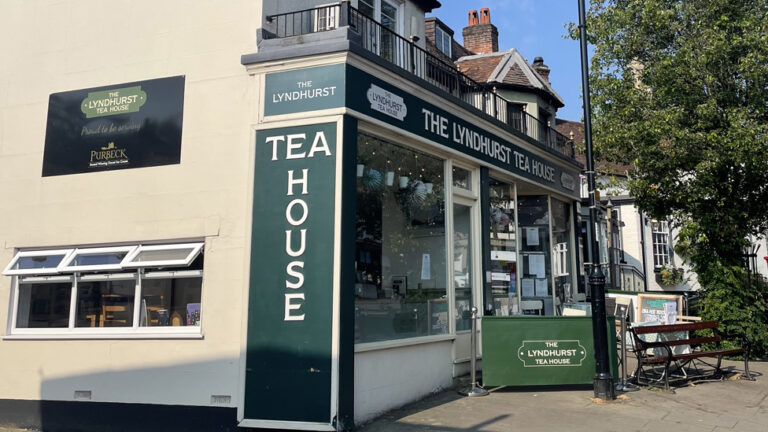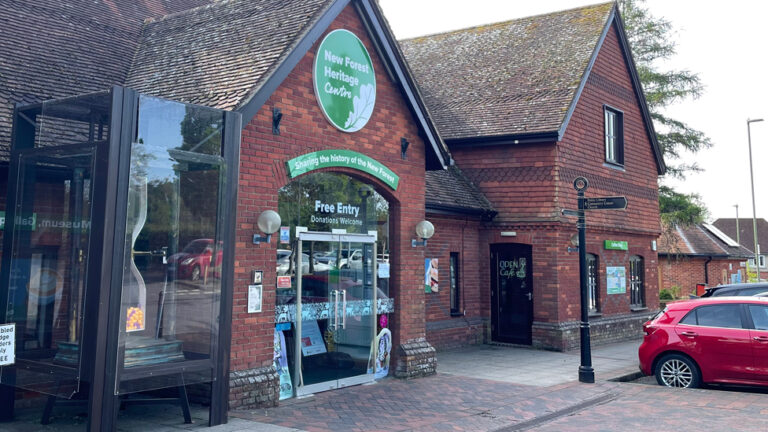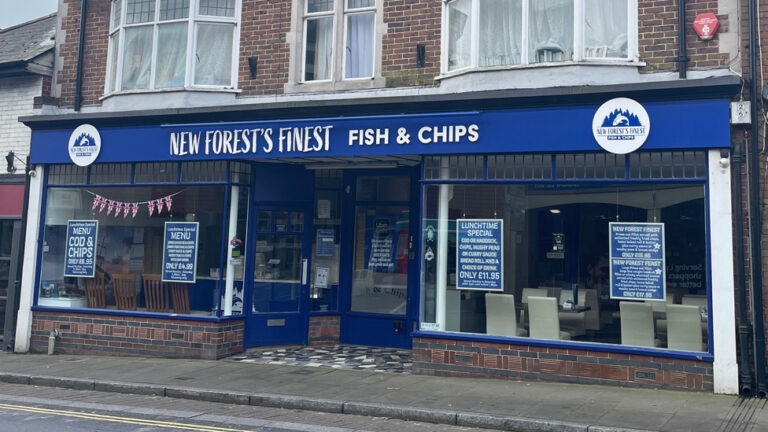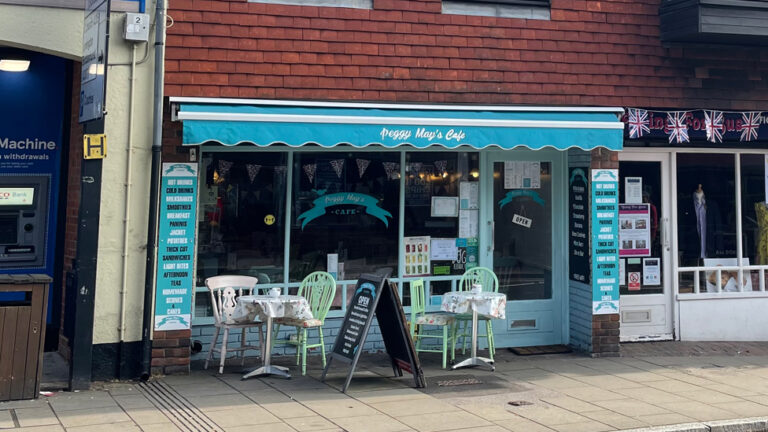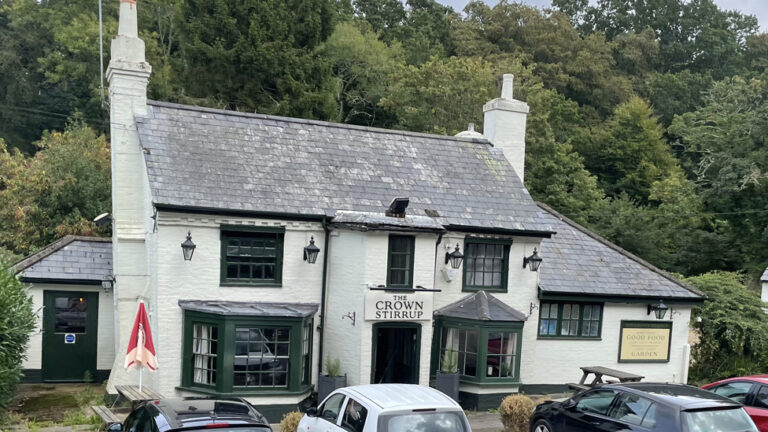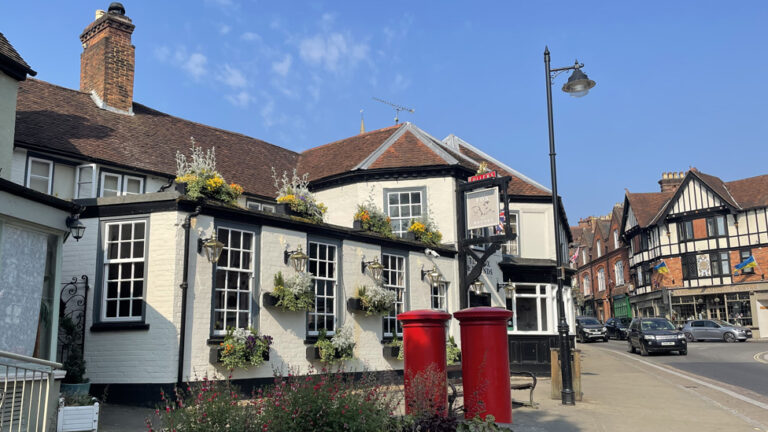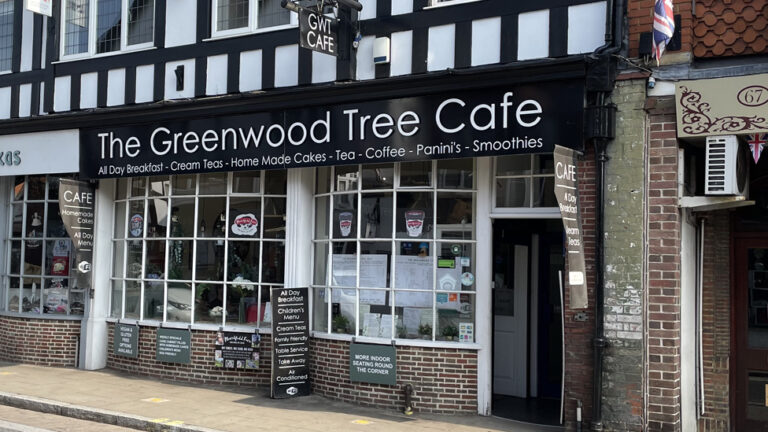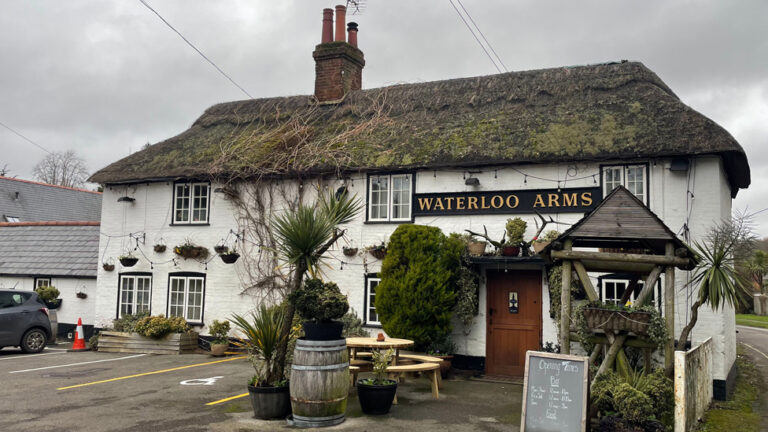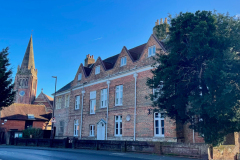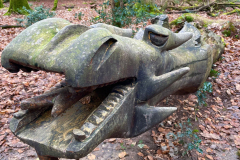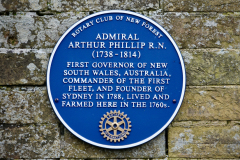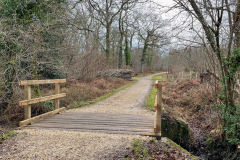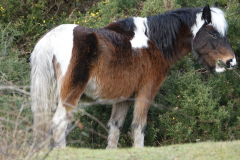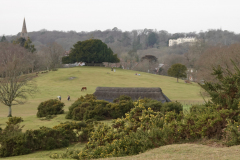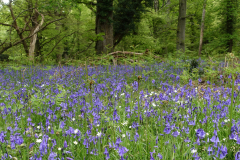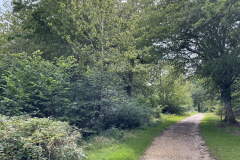Lyndhurst Explorer
Discover the history of the ‘capital’ of the New Forest, along with some of the characters who have lived in the village of Lyndhurst over the centuries. This short walk takes in notable buildings, landmarks and also some beautiful forest woodlands on its fringes. Enjoy a taste of the New Forest on the high street with the great selection of pubs, tea shops and restaurants.
Route
Map & GPX
Information
In Pictures
Route
From the village car park, take the exit beside the New Forest Heritage Centre towards the high street.
On the way out you’ll see a bench dedicated to Captain Arthur Phillip, situated beside a village street map.
Captain Phillip was the first governor of New South Wales – leading the First Fleet of convicts, soldiers and settlers at the beginning of European colonisation of Australia in 1788.
He lived at Vernalls Estate on the outskirts of the village. It’s thought the horticultural skills he learnt there helped to sustain the 2,000 people who arrived on the First Fleet and found themselves in an alien land on the other side of the world.
Follow the road out of the car park alongside the Royal British Legion building. Cross the high street at the pedestrian crossing before turning right and heading out of the village.
The first recorded mention of Lyndhurst was in 980AD. The name is of Saxon origin and means ‘lime wood’.
The settlement was at crossing point of a number of forest tracks leading from surrounding settlements. You can see that Lyndhurst still has the original road layout that evolved from those medieval tracks, with the village being a crossing point for roads linking New Forest villages.
The village is a honeypot location for tourists coming to the forest and the busy high street has a range of cafes, restaurants and pubs and shops to cater for visitors and residents alike.
If you’d like to go window shopping for some of the most prestigious and expensive supercars around, you’ll pass the Ferrari showroom opposite the Gosport Lane junction.
Cross at the lights and turn left, walking alongside the new Lyndhurst Park housing development. It’s on the site of the former Glasshayes House.
Glasshayes House was built in the early 19th Century by George Buck as a countryside retreat for him and his wife. Later residents included Richard Fitzgeorge de Stacpoole, 1st Duc de Stacpoole who ran a local smuggling ring.
During his time, the house’s octagonal tower was used as a lookout by smugglers. The house was raided by excise officers in 1847, during which the Duc barricaded himself in the tower.
The Duc died the following year and his ghost is said to haunt the house, with strange music heard each year on the anniversary of his death – reputedly from a grand ball for the dead.
Later residents of Glasshayes House during the Victorian era included local grocer and draper William Beale Bugden, and Charles Castleman who gifted the clocktower of the newly-built St Michael and All Angels church.
In 1895 Glasshayes House was sold and became the Grand Hotel.
Sherlock Holmes author, Sir Arthur Conan Doyle was a regular guest. During a stay in 1912, he sketched out designs for a third storey extension and altered front facade. Building work to carry out his designs took place later the same year.
Among the numerous famous guests who stayed during later decades were Margaret Thatcher and the Beatles.
In 1970 it was taken over by Forestdale Hotels and renamed the Lyndhurst Park Hotel. It closed in 2014 and, after several proposals, it was redeveloped for housing.
Before you reach the junction with the Beaulieu Road, go through the pedestrian gate beside the cattle grid and then cross the road towards the Bolton’s Bench car park.
Advertisement
At the far end of the car park is Lyndhurst’s war memorial.
The stone cross is located on the edge of what was Lyndhurst Camp, where some 30,000 soldiers were stationed during World War One.
In the early years of the war, the camp was home to the ‘Immortal 7th Division’, with The Grand Hotel serving as headquarters.
In October 1914 the soldiers were waved off as they marched the 11 miles to Southampton where they embarked on their journey to Ypres in France. They were involved in some of the worst fighting on the Western Front and suffered huge casualties.
The monument itself was erected in 1921 and originally bore the names of 68 local men who died in the war.
Victims of World War Two and subsequent conflicts were added later.
Cross the road and walk up towards the yew trees at Bolton’s Bench. The hill has become an iconic symbol of the New Forest and often has ponies or cattle grazing on the hillside.
Legend has it that the hill was formed from the corpse of dragon.
In the Middle Ages, the village of Bisterne near Burley was terrorised by a fierce dragon. A brave knight, Sir Maurice de Berkeley, arrived to rid the villagers of their nemesis.
The story goes that, after battling the beast across the New Forest, he eventually slew the dragon here and its body became the hill. The knight however was a broken man and he and his dogs eventually lay down and died – yew trees grew where they fell at the top of the mound.
The hill is actually a natural sandy mound. The bench commemorates the 18th Century New Forest Master Keeper, the Duke of Bolton. It offers views over the village, the surrounding grass lawns, cricket pitch and out towards White Moor.
Looking back to the north of the village you can see the impressive Notherwood House at Emery Down. Now converted into private flats, the 18th Century country house has views over the forest towards the Solent.
From the top of Bolton’s Bench, walk downhill back towards the road and continue talking towards the Bolton’s Bench East car park, keeping the cricket pitch to your right.
Walk through the car park and continue on the gravel path uphill which eventually plateaus with views over White Moor.
The moor is an expanse of heathland that extends from Lyndhurst towards Matley Wood and Ashurst. During World War One, White Moor was also used as a training site with practise trenches dug to replicate the battlefields in France.
The now-quiet heath would have echoed to the constant sounds of blasts and explosions as soldiers trained with grenades, landmines and mortars. Military dogs were also trained to carry messages through the trenches.
Unexploded items of ordnance have been found on the moor ever since, although systematic search and clearance work in recent years has made it safer. Walkers are still warned to take care if they come across any suspicious objects.
A disused sand pit at Parc Pale car park is on your right. The park pale was an earthen bank and ditch which enclosed a deer park. It dates back to the 13th Century when it was part of the royal hunting forest.
When you come to a crossroads in the path, 300m from the car park, turn right and walk down the hill towards Beaulieu Road.
Cross the road and, passing the sign for Ridge House, follow the path for a short distance until it reaches a gate at the edge of Pondhead Inclosure.
The 200-acre Pondhead Inclosure is unique in the New Forest as it has not been grazed by ponies and cattle for several centuries. This has resulted in it becoming a rich habitat for a variety of flora, butterflies and birds.
It also contains the largest area of hazel coppice remaining on the Crown lands of the New Forest. The volunteers of the Pondhead Conservation Trust continue to work to restore the woodland and improve its biodiversity.
As part of their sustainable management efforts, charcoal is produced from the woodland. Charcoal burning – using an environmentally-friendly Retort kiln – takes place during the summer months.
Shortly after a bridge over a stream, turn left and follow the path as it curves through the areas of hazel coppicing.
After 450m, turn right onto a main gravel path. Continue on the straight stretch for about 350m before turning left at a junction. Hidden in the woods on the left is Balanos the dragon – a sculpture creatively carved out of a fallen tree trunk.
In spring, when sunlight is able to reach the forest floor, this area of the inclosure becomes a sea of bluebells before the trees are fully in leaf.
Follow the main path for another 400m until you reach the inclosure gate. Exit the inclosure and turn right down Beechen Lane towards the A337.
Pass the thatched cottage, housing the Midforest vets practice. Turn right onto the footpath.
Opposite is the entrance to the Foxlease estate. The Georgian house with 64 acres (26 hectares) of grounds hosted the first Girlguiding world camps in 1924.
It became a Girlguiding activity centre but was closed in May 2023. A charity – Foxie’s Future – mounted a successful fundraising campaign to buy the property and hopes to reopen the site for camping, residential stays and community use.
Continue on the footpath, past the bus stop, back towards the village centre. You’ll shortly reach Goose Green – the triangular patch of open grass where the roads split. The green was used by commoners to graze their geese and was also the site of a goose fair.
The solitary tree on the green was planted in 1981 to mark the marriage of the then Prince Charles to Lady Diana Spencer.
On the wall, just past the entrance to the Broadlands house, you’ll see the blue plaque honouring Sir Arthur Phillip.
Cross the road onto the path cutting across Goose Green before crossing the two-lane part of the one-way system. Turn left and follow the footpath as it turns right onto Shrubbs Hill Lane.
Follow the footpath for 650m back towards the high street.
When the road meets the high street, you’ll see the oldest surviving building in Lyndhurst – the King’s House. It has been the centre of administration in the New Forest for centuries and is known as either the King’s or Queen’s House, depending on the monarch of the day.
The Verderers’ court adjacent to the King’s House has played a key role in the administration of the forest since medieval times.
After the Norman Invasion, William the Conqueror declared the New Forest – Nova Forest – as a royal hunting ground. It extended from the coast all the way to Winchester.
A harsh ‘Forest Law’ was established – forbidding locals to take any deer or boar from the forest that was preserved for royal sport. Trees could not be cut down and crops could not be fenced in – all so the deer could run freely through the forest. Nothing could disrupt the thrill of the chase for the royal hunting parties.
Wiliam died in 1087. His son William assumed the crown of England and continued his father’s passion for hunting in the New Forest. Harsh punishments and mutilations were introduced for anyone who broke Forest Law.
Forest Law was later eased and the 1217 Charter of the Forest introduced legal rights for Commoning.
Commoners occupying land or property were given rights including to graze livestock on the open forest or to gather wood for fuel. The Verderers’ Court was established to enforce the laws and protect the Commoners’ rights and is still in operation today.
Next door to the Verderers Court is the parish church of St Michael and All Angels. The spire of the Victorian brick building dominates the skyline of the village. It was built on the site of a Georgian church constructed in the 1740s.
An archeological dig in 2012 found evidence of religious activity on the site dating back to medieval times. Records showed there was a royal hunting lodge on the site of the current King’s House, adjacent to the church, which had a chapel attached.
Walk up the hill to the church door – the Crown Hotel and the village school are opposite.
If the church is open, you can see the impressive stain glass windows and the lavish fresco of the parable of the Wise and the Foolish Virgins behind the altar.
It was created by artist Frederic Leighton who was staying with his mother in Lyndhurst at the time the church was being built. Local girls from the village reputedly acted as models for the figures.
Around the back of the church is the grave of Alice Liddell – the inspiration for Alice in Wonderland.
A family friend, Charles Dodgson, later known as Lewis Carroll, made up his fantastical stories to entertain four-year-old Alice and her sisters on a boat outing in 1862 and they formed the basis for Alice’s Adventures Under Ground.
The Alice in Wonderland books went on to become among the most popular children’s stories ever written.
After marrying Reginald Hargreaves at Westminster Abbey in 1880, Alice moved to Lyndhurst, where they lived in a country mansion on the edge of the village, known as Cuffnells. Alice died aged 82 in 1934. Her ashes are buried here in the graveyard.
Having circled the church, take the steps back down to rejoin the high street. Head down the street past the traffic lights where you can call in to a number of popular pubs and cafes including the Fox and Hounds.
When horse-drawn stage coaches were the main form of transport between towns, the inn was an important coaching house on the route between Bournemouth and Southampton. The coachman would sound his horn as he passed the Swan Inn at Swan Green, about a mile from Lyndhurst High Street.
This was the signal to the Fox and Hounds to have new horses ready to be changed to pull the coach on towards Southampton.
At the Lyndhurst Tea House, turn back in to the car park. You can learn more about the history of Lyndhurst and the rest of the New Forest at the New Forest Museum and Heritage Centre.
Entrance is free to the exhibits which chart the history, customs and wildlife of the forest.
Acknowledgements and further reading:
Lyndhurst in Wartime -Angela Trent
Discover Lyndhurst Arthur Phillip – Angela Trent
History of Pondhead Inclosure – Derek Tippetts
New Forest Hauntings – Ben Johnson
Advertisement
View Map
Essential Information
Download PDF Guide
Weather

